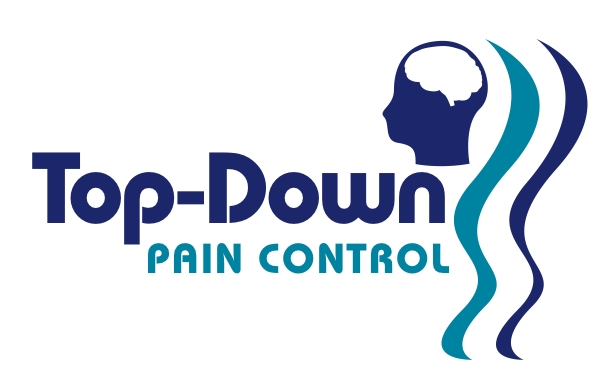George A. Kelly (1905 - 1967)
In 1955 psychologist George Kelly published his two-volume work, the Psychology of Personal Constructs, which heralded an entirely new view about how we as individuals see and interact with each other and the world around us.
Here the approach to understanding pain and pain management is firmly based in the principles of Personal Construct Psychology (PCP) coupled with Acceptance and Commitment Therapy (ACT) and the contemporary shift in neurophysiology to a constructivist framework. Examples of the latter are outlined below.
Essentially, Kelly said that we do not have to live in a world of predetermined ‘givens’. Straight away we can relate this to to the procedure room and how the child construes the experience. There is no 'given' that this particular procedure for this child is going to be distressing. This also helps to explain why the same procedure can be so different from one child to another, which by the way supports Kelly's personal rather than social constructivism. For Kelly, the world in which we live, our reality, is largely a matter of how each of us personally views it. Suppose you see a film with a friend and as you walk out your friend turns to you and says “What a fantastic the film, that was brilliant” but you thought it was a bit dull and predictable. It is not the film that was fantastic or dull so much as how you each personally construed it.
In a Kellian sense, we view and understand our world through our constructs. A construct is a way of discriminating between two opposite entities, for example brilliant - dull, or difficult - easy, or safe - unsafe, or happy - sad, and so on. Although our constructs are, by definition bi-polar and flexible, we tend to lean toward a particular end or view. Even the notion of flexibility of a construct is bipolar because flexibility exists in the light of its polar opposite, which is inflexibility as a flexible - inflexible construct.
There is an abundance of literature and research on PCP but the upshot is that every construct, view that we have, can shift.... or not. Central to Kelly's approach is the notion that we actively construe the realities with which we interact. It may however be the case that people do not actively (re)construe their reality until they are turned on to the idea. Similarly, from an ACT perspective, many people are literally stuck on a view, fused with a particular thought or memory; it is difficult to 'defuse' from a thought until you are aware that you are 'fused' to it (therein lies a fusion - defusion construct).
The approach taken here is a combination of PCP and ACT. Each approach has much to offer in understanding pain, particularly procedural pain. For those who have a deeper interest, there are similarities in both theories namely, constructive alternativism and functional contextualism and, 'tight - loose construing' and 'fusion - defusion'.
Being stuck, fixed, one-eyed on a something is, in a Kellian sense, being ‘tightly construed’ around a particular pole (end) of a construct. While we hold a particular view on (construe) a situation, event, person etc in that manner, to all intents and purposes it is real, it is reality, it is a truth a fact. However, if we can ‘loosen‘ and move (re-construe) then what we move towards becomes the alternative view, the new reality.
What this approach does, is it opens a world of alternatives because how you see or feel something today, does not have to be how you see or feel it, tomorrow. This is largely a matter of direction: do we soak up experience or do we create it? The traditional (stimulus - appraisal - response) view is that we react to the world around us. Our psychological state is determined by how we respond to what is happening in and around us. Kelly literally turned this view around. In psychological terms he switched the emphasis from appraisal to construing. In plain language, that which is happening in, and around us, is a function of how we see it and most importantly, that can change.
Constructivism, Nociception* and Pain
In my PhD I extended Kelly’s view that we actively create our reality to include the sensorium. What this means is that pain is no longer a ‘given’. The move from a purely bottom-up, to a top-down view of the world is evident in the emergence of constructive frames of reference in neurophysiology. For example, Greenfield (2000) posed the problem of understanding the neurophysiology of vision in constructivist terms.
How can we find out how our eyes and brains collaborate to create the sense of vision that makes up our own version of reality? … For every connection carrying information from the eyes, there are at least ten coming in exactly the opposite direction from the higher areas of the brain. (p. 73 and 79, italics added)
Here Greenfield is emphasizing the role of top-down processing in vision. She goes on to reject the Cartesian notion of the brain as a mere receiver of sensory input.
There is far more to the senses than the brain acting as a mere sponge to the flood of light, sound, taste, smell and touch sensations coming from the outside world. (Greenfield, 2000, p.79)
In regard to pain, Coghill et al. (1999) concluded that pain intensity, affect, feature extraction (cognitive evaluation of a painful stimulus), motor control and attention are all subject to significant modulation by top-down factors. Similarly, Mesulam (1998, p. 1034) said, “Mental imagery provides one of at least three settings where the activation of sensory areas can transcend the constraints imposed by external reality”. What this means is that the notion that a painful stimulus (nociception) will necessarily result in pain is outdated. Instead, there are a range of possibilities or alternatives. This is consistent with what Kelly called ‘Constructive Alternativism’. “We assume that all of our present interpretations of the universe are subject to revision or replacement” (p. 15, italics original).
Practical Applications
There are three practical gems from Kelly’s PCP that underpin the approach taked to pain management here.
"Transcend the obvious"
Kelly held that whatever is obvious is usually an assumption and if we get caught up in our assumptions we may miss the heart of the matter. It is difficult to conduct a valid assessment if one has already made one’s ‘expert mind up’ as to what the problem is.
“If you want to know what is wrong… Ask”.
This may seem common sense but it is surprising how infrequently it is applied. If you are going to ask what is wrong you must be prepared to listen and to act on the response. To illustrate, one so-called 'needlephobic' child responded when I asked, "What is the worst part about all this?" His response, "I don't like it when they hold me."
“… Or not”
This Kellian tag is a way of articulating Kelly’s constructive alternativism. It is also a useful way of loosening one’s tightly held view to entertain the notion that there is an alternative. For example: "I know this procedure is going to be awful ... Or not ..." In a Kellian sense, 'Awful' exists in the light of its polar opposite - fine, okay, bearable etc.
For anyone who has felt that they are in a hopeless situation wracked by feelings of helplessness be it pain related or any other, the following quote from Kelly (1955) is apt.
No one needs to paint himself (sic) into a corner; no one needs to be completely hemmed in by circumstances; no one needs to be the victim of his biography. (p. 15)
For more recent developments and applications of PCP see Butler (2009), Butt (2008), Fransella (2005) and the following links.
Useful PCP Links
Centre for Personal Construct Psychology, University of Hertfordshire, http://www.centrepcp.co.uk/
The PCP Portal http://www.pcp-net.de
Personal Construct Psychology in Europe, http://www.pcp-net.org/europe/home.html
Australian Psychological Society Member Group. https://groups.psychology.org.au/pcp/
REFERENCES
Butler, R. (Ed.) (2009). Reflections in personal construct theory. Chichester: Wiley-Blackwell.
Butt, T. (2008). George Kelly: psychology of personal constructs, shaper of: personal meaning. Basingstoke: Palgrave Macmillan.
Coghill, R. C., Sang, C. N., Maisog, J. M., & Iadarola, M. J. (1999). Pain intensity processing within the human brain: A bilateral, distributed mechanism. Journal of Neurophysiology, 82(4), 1934-1943.
Fransella, F, (Ed.).(2005). Essential handbook of personal construct psychology. Chichester: Wiley
Greenfield, S. (2000). Brain story: Unlocking our inner world of emotions, memories, ideas and desires. London: BBC.
Kelly, G. A. (1955). The psychology of personal constructs. New York: Norton.
Kelly, G. A. (1977). The psychology of the unknown. In D. Bannister (Ed.), New perspectives in personal construct theory (pp. 1-19). London: Academic Press.
Mesulam, M. (1998). From sensation to cognition. Brain, 121. 1013-1052.
*Nociception is a term in neurophysiology that describes the generation and transmission of nerve impulses to the brain that end up being experienced as pain.


